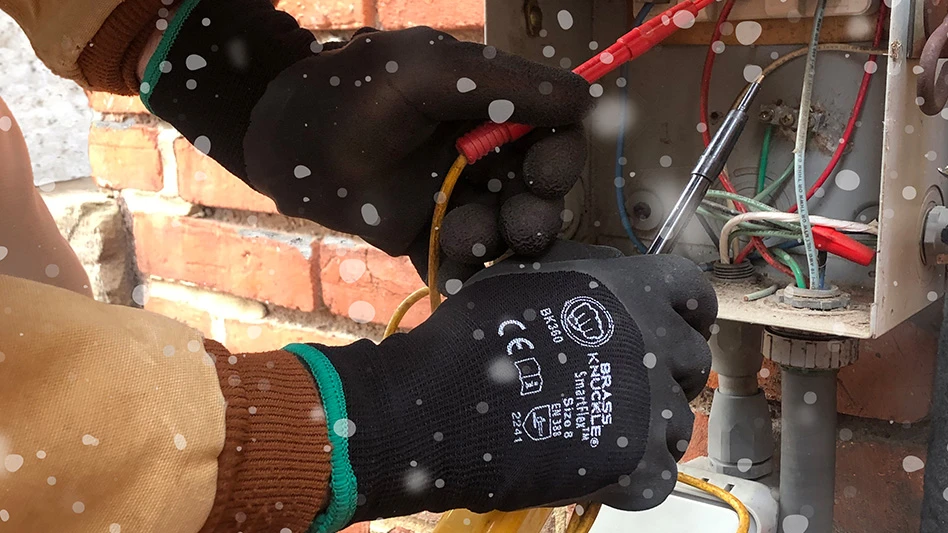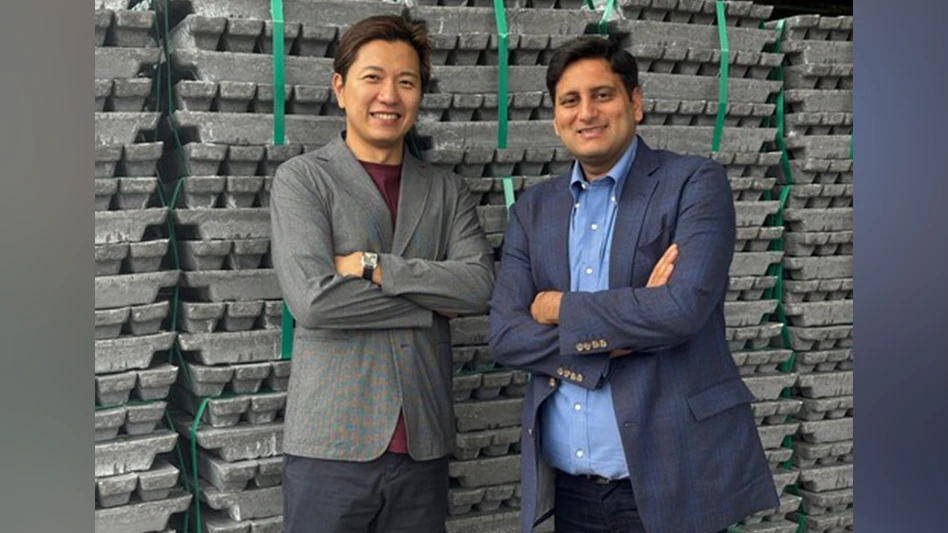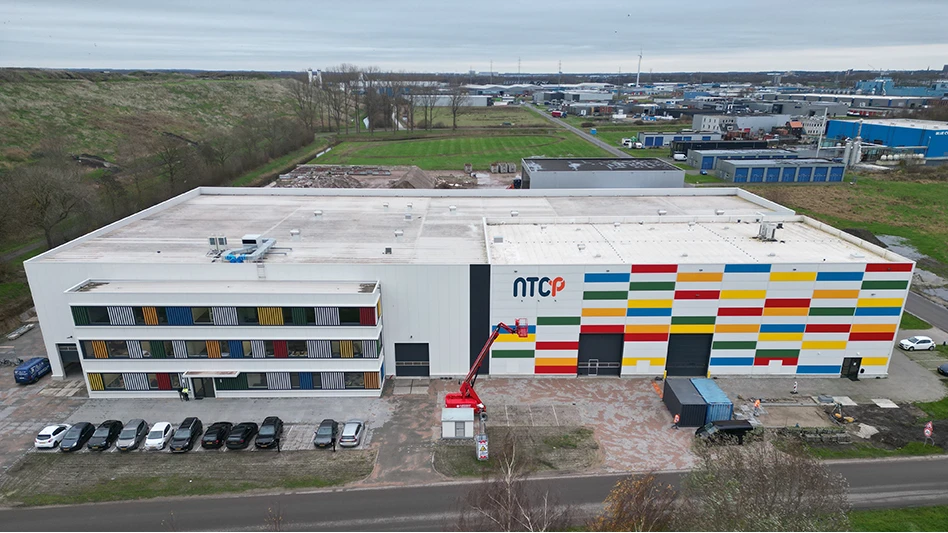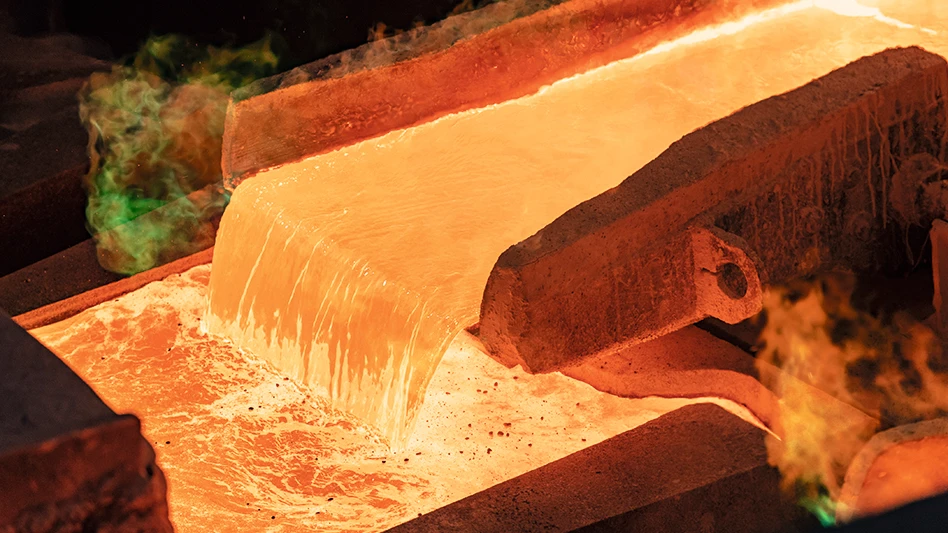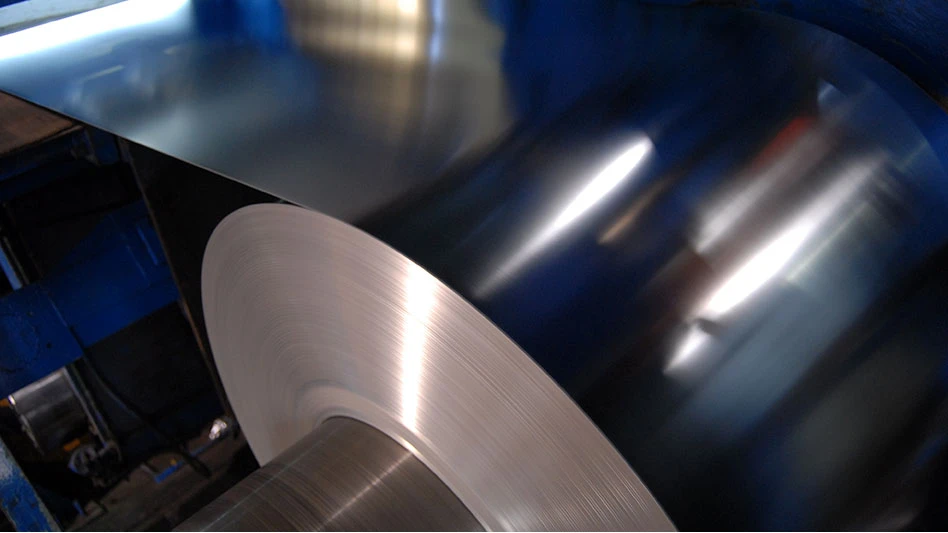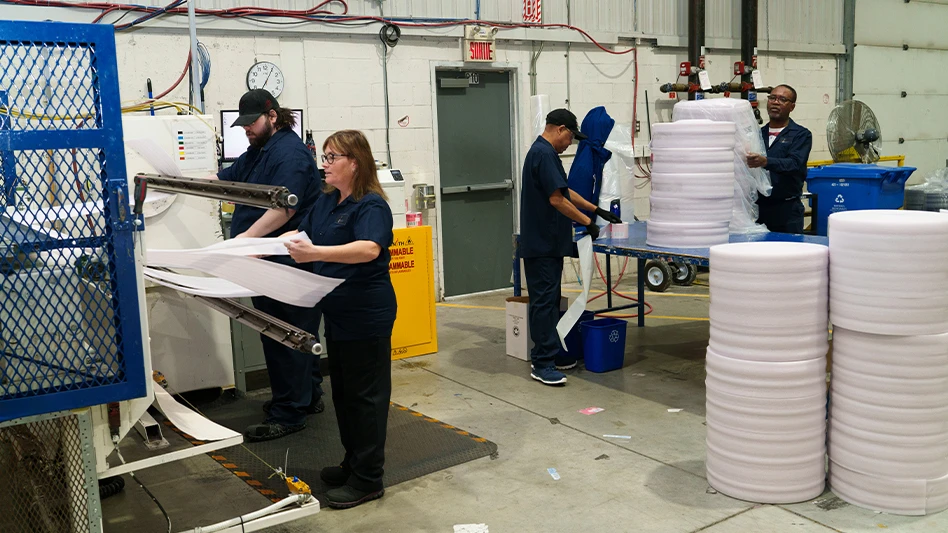If April showers bring May flowers, they also seem to be bringing higher platinum and palladium prices. But no amount of rain seems to be enough to make gold and silver prices bloom.
There is no direct relationship, of course, between weather and precious metals. Still, last April saw palladium prices go through the roof. When the metal jumped $12 an ounce, in New York, trading was halted for a bit; but in London it zipped up $42 an ounce to a then-amazing $380. This year, in March palladium hit $720, before easing off to $565 a month later. And this year, platinum nosed to $520 in early April before dropping back a bit.
Meanwhile, the traditional precious metal—gold—is stagnant. “Prices are a bear,” puns Steve Skurnac, president of Micro Metallics Corp., Roseville, Calif. “Gold is suffering at $275 an ounce.”
But he sees hope in the palladium market which he notes has “gone crazy in the last year and a half.” Indeed, with palladium up in the $500-$600 range from $110 a couple of years ago, there is hope. “Palladium is a nice offset for a company like ours,” he continues. “A little palladium goes a long way toward offsetting the gold and silver prices.”
Micro Metallics was set up to recycle “end-of-life” (obsolete) computers, printers and peripherals. That often involves as much recovering circuit boards, hard drives and memory cards as it does taking machines apart for their precious metals content.
Griff Martin, CEO of Martin Metals, Los Angeles, notes that the high prices offered for palladium are getting people interested in the market. “They are getting anything they can get their hands on and getting it processed,” he says. While he is seeing lower-grade materials, the higher price for palladium more than justifies the added cost of extracting the materials. Most of his material comes from electronics.
ELECTRONICS BOOM
Aging computers and cell phones are among the growing market segments providing recyclables into the market. At United Recycling Industries, West Chicago, Ill., president Bob Glavin maintains “you can never get enough” for recycling. But he’s doing pretty well. Currently, the company is processing 2.5 million pounds per month of electronics. That is up from 1.25 million pounds a year ago.
“Volume is huge,” he says. One reason for increased electronics recycling is companies are more environmentally conscious. “Companies don’t want equipment with their inventory or asset tags to end up in a dump,” Glavin continues. “Their hard drives may have sensitive information on them and they don’t want them just anywhere.”
Another reason for increased recycling is that many cities and states are passing laws requiring it. Massachusetts is the first state to require homeowners (not just corporations) to recycle monitors and other equipment.
In DuPage County, Ill., a one-day take-back of computer and communications equipment drew seven trailer loads—70,000 pounds—from homeowners only. United sponsored the program.
While there is a lot of computer equipment going to recyclers, the drawback is that it does not contain as many ounces of precious metals as it once did. “There is substantially more volume of electronics scrap than we saw in the 70s, 80s and 90s,” Skurnac says. “But it has a much lower grade of precious metals content. It’s tougher to make a go of it just recovering precious metals from computers. Now we are more geared to asset management and recovery,” he adds.
FULL SERVICE PROCESSING
While the precious metals are still worth pulling, they are not the sole way of recovery. “If you just take an old computer and take it apart for precious metals content, it is not economical. We’re more a full-service business now,” Skurnac says.
United is full-service, too. They are one of the few fully integrated operations. They’ll pull recent vintage machines with 133 MHz processors or Pentium chips and resell them. Next, they’ll look for boards and integrated circuits and market them. United processes about 500,000 pounds of circuit boards and plating waste monthly. Its United Refining division will recover the precious metals component from cards that can not be resold. Glavin finds that even the plastic housing can return a half-cent to a penny per pound. With 80 tons a month of cardboard coming onto the line from packaging those electronics products, that number is also too big to be ignored.
“The computer carcass is steel,” Glavin points out regarding some mainframe and mid-range units. “Metal always has a ready market, seven days a week.”
With components keeping the business profitable regardless of where precious metals prices go, and the world of computers and high tech becoming obsolete on a more rapid cycle, the Russians no longer are the only game in town—although they certainly are an influence.
PLATINUM AND PALLADIUM
Most analysts will point the finger at Russia—and not the weather—when trying to figure what is going on in the palladium and platinum markets.
Martin is one of several who believes that the price of palladium will depend on what the Russians do. “If the Russians keep delaying delivery, the price of palladium will stay where it is or go up,” Martin says. While he does not see prices zooming to the $800 level in the near future, he does not put a price in the $600-$625 level out of consideration at all.The market for recycling catalytic converters remains hot, too. But it fluctuates with every rumor from Russia.
“Unlike the ferrous fraction of scrap vehicles, substantial numbers of converters disappear from the recycling stream when the relevant metals prices are too low,” says Ashok Kumar, a principal of A-1 Specialized Services & Supplies, Inc., Croydon, Pa. The firm specializes in lot consolidation and dry processing of salvage converters.
Kumar notes that ferrous may back up in the system for a while if prices are unfavorable, but very little ferrous actually disappears from the system. This is because, in time, almost all automotive ferrous must be recycled. Simple disposal is not an option; there’s just too much of it, and no place to put it.
Converters are different. If the aggregate platinum, palladium and rhodium price is too low, wrecking yard operators often won’t bother to remove converters from scrap vehicles. They’ll just send vehicle hulks off for shredding with converters attached. “Once converter internals become intermixed with regular shredder fluff, the catalyst disappears from the system,” he notes.
The U.S. Geological Survey (USGS) estimates 70 metric tons of platinum group metals (PGM) was recovered from new and old scrap in 1999. Auto catalysts continued to be the largest demand sector. More than 110,000 kilograms of PGM were used by the automotive industry to manufacture catalysts. The materials also find widespread use in the medical industry, including use in prosthetic and biomedical devices, as a dental restorative and for use in cancer chemotherapy. Still, catalytic converters use more PGM than the total amount of all other U.S. uses combined.
The USGS figures for 1998 show an estimated 10 tons of platinum, six tons of palladium and two tons of rhodium were available in the United States for recycling from auto catalysts.
Although individual platinum, palladium and rhodium prices have moved up and down sharply over the past three years, Kumar says the aggregate price seems not to have dropped so low as to induce wrecking yard operators to stop removing converters from scrap vehicles. He adds that, fortunately, individual platinum, palladium and rhodium price excursions were almost always out of phase, so the aggregate price generally trended upward, even while one or two of the three metals may have been ascending, and one or two may have been declining.
PMG PRICES
As for the individual platinum, palladium and rhodium price ranges over the period between January 1997 and this Spring, the numbers are striking. Platinum has ranged from $350 to $575, palladium from $120 to $825, and rhodium from $220 to $2,550.
Kumar points out that spot prices, which receive so much attention in the media, actually have only psychological influence upon salvage converter pricing. What really impacts converter prices is the forward price of the three key metals six months hence. This is because the platinum, palladium and rhodium metals in a converter require on average about six months of recovery processing before they are converted into deliverable form.
Over the past three years, for a number of reasons, forward prices for the most part have been lower than spot prices; sometimes a lot lower. Kumar says this condition prevents buyers of salvage converters from basing their price offerings upon the typically higher spot prices. They have little choice but to base buying prices upon metals prices six months in the future.
Martin expects more converters to be available in his area, at least, as the years go on. “California has a large population of between 20 million and 25 million cars,” he points out. Figuring that 10% are scrapped each year, that brings about 2 million junkers to the state’s recycling operations. Between 70% and 80% of those vehicles have catalytic converters.
“There will be an increase in catalytic converter scrap,” he asserts. “That will be good for the palladium and platinum supply.” For the next couple of years, however, he does not expect it to bring much rhodium onto the market because the three-way converters still are too new to be hitting the scrap market in any volume.
When asked about the seemingly never-ending Russian shenanigans affecting palladium prices, Kumar inquires rhetorically as to why Russia would seek to damage a market in which they are by far the world’s largest supplier. Already, he notes, vehicle, dental appliance, and capacitor manufacturers are turning to substitute metals even when the substitutes are less preferable performance-wise. “The Russians’ behavior makes no sense. Enough is enough,” Kumar says.
All in all, Kumar reflects, salvage converter business is good. Converter supply has been ebbing and flowing; but even while ebbing, it’s been flowing.
GOLD NOT GLITTERING BRIGHTLY
On August 25, 1999, the spot price of gold on the New York Mercantile Exchange hit a 20-year low of $252.50. It was just the worst day of a poor year. Through most of 1999, prices stayed below $275 an ounce—although prices did perk up over $300 for a moment in September. This was a rebound from a market that continued to test lows.
However, the Gold Institute, Washington, sees a decline in exploration expenditures and closure of high-cost mines. As a result, the Institute sees lower projections for future production.
The United States Geological Survey (USGS), Reston, Va., put domestic mine production of gold in 1999 just a tad below the record levels of 1998, but good enough to keep the U.S. in second place (behind South Africa). Production in 1998 was up 3% to 82 million ounces.
Worldwide, the Institute says production will increase only one percent by 2002. That figure is contingent on South Africa expanding its production by 4% to 15.6 million ounces by then. If South African mines do not meet that forecast, then worldwide totals will actually decline.
In 1999, 150 metric tons of new and old scrap were reported to be recycled domestically. That amounts to about 63% of reported consumption. Traditionally old scrap contributes 13-25% of the total. New scrap, generated during manufacturing, is usually not counted as part of the market supply.
Through the early months of 2000, gold hovered in the $280 area and that was certainly not going to bring those hoarding gold into the yards. Still, it is manufacturing that is the mainstay of the gold recycling business. In the USA, about two-thirds of the scrap comes from manufacturing operations, and the remainder comes from old scrap.
New, low cost mines in Peru, New Guinea, Indonesia, and the U.S. have helped lower the cost of mining gold and leading a consolidation of primary production in fewer, but more efficient, mines.
USGS put the value of gold scrap imported and exported in 1998 at $190 and $197 per troy ounce, respectively. That was roughly $100 below the average price for gold.
SILVER
Where are the Hunt brothers when you need them? Ever since trying to hit $6.50 an ounce in 1998, the silver market has been punk, trading in a narrow band between $5 and $5.50. Any move to break out in either direction has been quashed quickly.
“Silver just stays in the $5 area and moves 10 to 15 cents an ounce,” Martin says. The result has been a rather regular stream of material—no rush to recycle, but no slowdown in supply availability, either.
John Whitney, president and CEO of Itronics, Reno, Nev., says his company getting all the photochemicals it needs. His firm specializes in photochemical recycling and silver refining, taking the leftover material and converting it into fertilizer after recovering the silver and heavy metals.
“We’re focusing on cranking up fertilizer sales. We have all the photochemicals we can handle,” he says. Itronics purchases a portion of the silver from firms like One-Hour, Costco and hospitals, charges for refining, and credits back the net amount based on an 80-20 split.
“We’re happy with current silver prices,” Whitney says. “I expect they will strengthen.” He points to the current disconnection between supply and demand. “Mines are not producing enough material. That demand is being supplied for the past 10 years by surface inventory,” Whitney says.
The Silver Institute, Washington, D.C. pegged silver production at 522 million ounces in 1999, a three percent increase over 1998. Mexico, Peru and the U.S. remain the top three producers. In 2000, Mexico is projected to increase output from 91 million to 106 million ounces. Peru’s production will drop from 66 million to 65 million, and the United States will increase output to 66 million in 2000 from 63 million in 1999.
Silver production continues to fall well short of total silver demand – the Institute reports that 1998 was the tenth straight year demand exceeded conventional supply from mine production and scrap. In 1998 it was 295 million ounces.
With an average shortfall of 261 million ounces, why aren’t prices jumping? The reason is above-ground inventories. The bottom-line 1998 gap of 105 million ounces was filled by drawing down above-ground stocks. The Silver Institute says that above-ground silver inventories were trimmed by over 1.1 billion ounces between 1990-1998.
“The amount of silver recovered from photochemicals is up sharply. But not enough to stop the drawdown of surface stocks,” Whitney says. He is bullish on an increase in silver prices. Three years ago, he notes, prices went up. Last year was stable at a weighted average around $5.45. This year, prices have fallen. “But as the year progresses, I’d expect prices to strengthen,” Whitney says. He projects a silver market at $5.50 by year-end.
All in all, the market remains on in which a careful manager can make ends meet. Products containing precious metals continue to pour into the recycling flow. The outlook for continued high volumes of electronics equipment is good. The Russians may get their show together and remove the dark cloud that hovers over platinum and palladium. If so, there might just be a silver lining behind the precious metals market. RT
The author is an environmental writer and Recycling Today contributing editor based in Strongsville, Ohio.

Explore the June 2000 Issue
Check out more from this issue and find your next story to read.
Latest from Recycling Today
- Nucor names new president
- DOE rare earths funding is open to recyclers
- Design for Recycling Resolution introduced
- PetStar PET recycling plant expands
- Iron Bull addresses scrap handling needs with custom hoppers
- REgroup, CP Group to build advanced MRF in Nova Scotia
- Oregon county expands options for hard-to-recycling items
- Flexible plastic packaging initiative launches in Canada
